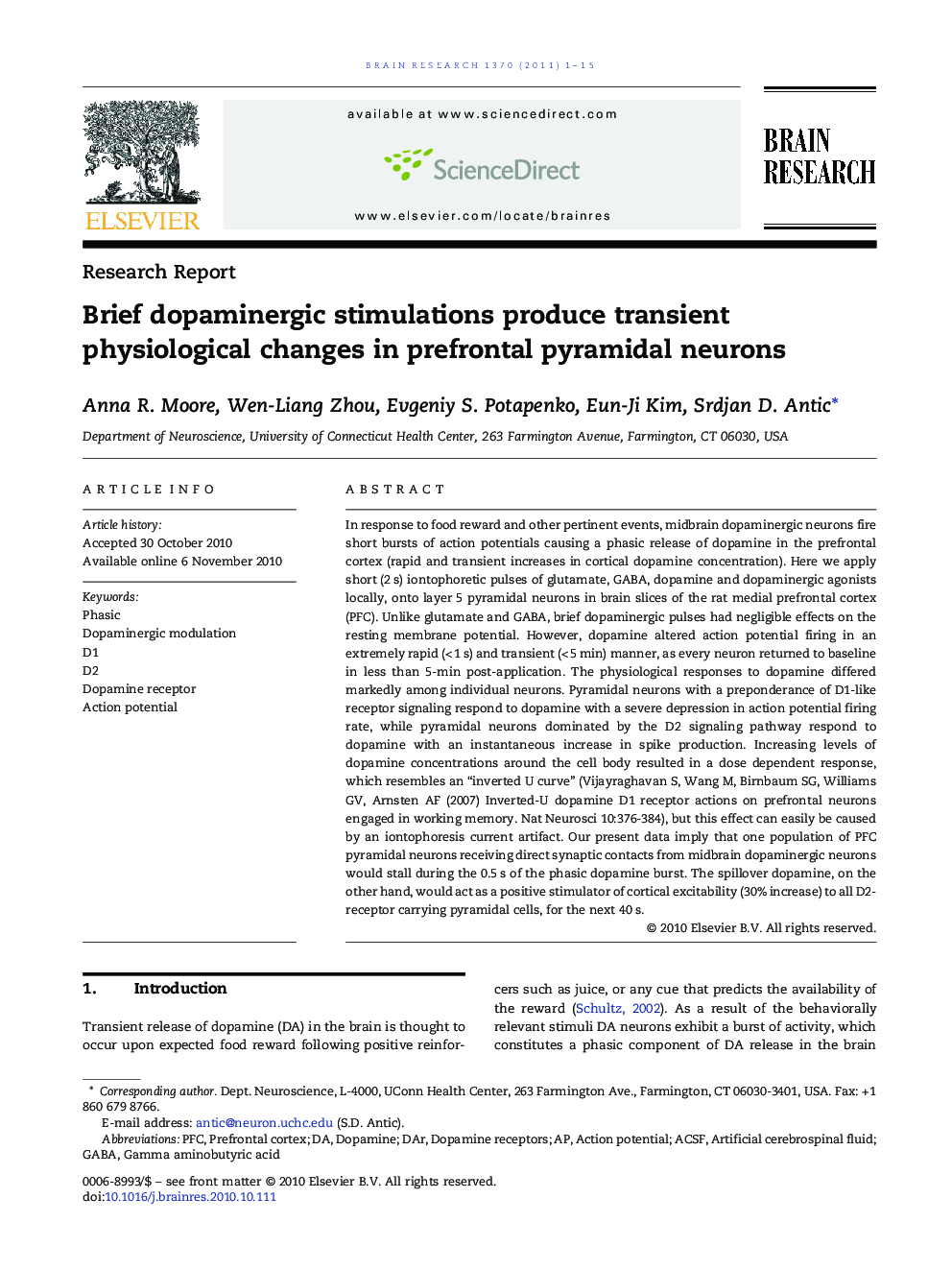| Article ID | Journal | Published Year | Pages | File Type |
|---|---|---|---|---|
| 6265246 | Brain Research | 2011 | 15 Pages |
In response to food reward and other pertinent events, midbrain dopaminergic neurons fire short bursts of action potentials causing a phasic release of dopamine in the prefrontal cortex (rapid and transient increases in cortical dopamine concentration). Here we apply short (2Â s) iontophoretic pulses of glutamate, GABA, dopamine and dopaminergic agonists locally, onto layer 5 pyramidal neurons in brain slices of the rat medial prefrontal cortex (PFC). Unlike glutamate and GABA, brief dopaminergic pulses had negligible effects on the resting membrane potential. However, dopamine altered action potential firing in an extremely rapid (<Â 1Â s) and transient (<Â 5Â min) manner, as every neuron returned to baseline in less than 5-min post-application. The physiological responses to dopamine differed markedly among individual neurons. Pyramidal neurons with a preponderance of D1-like receptor signaling respond to dopamine with a severe depression in action potential firing rate, while pyramidal neurons dominated by the D2 signaling pathway respond to dopamine with an instantaneous increase in spike production. Increasing levels of dopamine concentrations around the cell body resulted in a dose dependent response, which resembles an “inverted U curve” (Vijayraghavan S, Wang M, Birnbaum SG, Williams GV, Arnsten AF (2007) Inverted-U dopamine D1 receptor actions on prefrontal neurons engaged in working memory. Nat Neurosci 10:376-384), but this effect can easily be caused by an iontophoresis current artifact. Our present data imply that one population of PFC pyramidal neurons receiving direct synaptic contacts from midbrain dopaminergic neurons would stall during the 0.5Â s of the phasic dopamine burst. The spillover dopamine, on the other hand, would act as a positive stimulator of cortical excitability (30% increase) to all D2-receptor carrying pyramidal cells, for the next 40Â s.
Research HighlightsâºBrief stimulation of dopamine receptors near the cell body rapidly modifies AP firing (< 1 s). âºChanges in AP firing are products of DA modulation of membrane (not synaptic) excitability. âºDirection of change (increase or decrease) depends on the balance between D1-like and D2-like DAr pathways. âºD1 DAr agonist depresses excitability of the soma-axon junction, while D2 agonist increases it. âºDA-induced changes in neuronal AP output are short lived (< 270 s).
